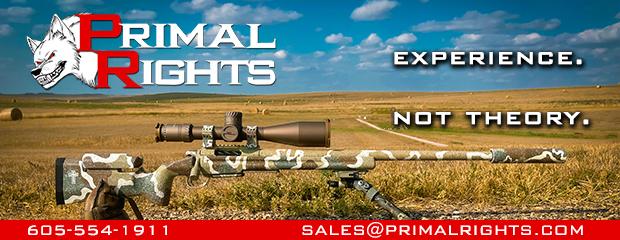Litehiker
Well-Known Member
We must admit that long range hunting has largely become possible because of good laser range finders. And some could add that good ballistic engines are also part of this revolution. No argument here.
But without laser rangefinders we would be reduced to using our MilDotMaster slide rules and reticle sub tensions v.s known heights at distance. That would be s - l - o - w and less accurate.
With the advent of laser rangefinders inside scopes we can now range and shoot even faster. I think in the near future we will see this technology appear in higher quality military rifle scopes. Tech marches on, ever faster.
For hunting I prefer the simplicity of range finding 10X binoculars with a built in menu of cartridges to give me a mil hold readout. Yeah, I know that "library" of cartridge ballistics is ballpark but I have range tested it and know where it is a bit off. That range testing, even with the precision of your muzzle velocity integrated with say, Applied Ballistics' engine, must be range tested in your rifle and with your hunting ammo.
So here are my LRH suggestions:
1. a good laser rangefinder
2. good ballistic engine that accepts your muzzle velocity (Buy or borrow a chronometer)
3. range testing the ballistic engine results
4. Practice, practice, practice over various distances, altitudes and/or temperatures using your laser rangefinder to get used to doing it. (The beauty of my club's steel range is that it is set up in meters so that the first hen is 212 yards and going further out adds odd yards to the targets, making using a rangefinder more realistic.)
5. a good scope of 18X or more with MOA or mil hash mark subtensions (And, I'd add, a G3 or similar "small" Xmas tree reticle for wind holds.)
OK, so some hunters don't like the "complicated" Xmas tree reticles. To them I say you need to try the "small" Xmas tree reticles like the G3 that are much less complicated than, for example, my H59 competition reticle. Using reticle hashmark holds instead of dialing is just as accurate and faster than dialing. Plus they give you an EXACT place to hold for wind.
Eric B.
But without laser rangefinders we would be reduced to using our MilDotMaster slide rules and reticle sub tensions v.s known heights at distance. That would be s - l - o - w and less accurate.
With the advent of laser rangefinders inside scopes we can now range and shoot even faster. I think in the near future we will see this technology appear in higher quality military rifle scopes. Tech marches on, ever faster.
For hunting I prefer the simplicity of range finding 10X binoculars with a built in menu of cartridges to give me a mil hold readout. Yeah, I know that "library" of cartridge ballistics is ballpark but I have range tested it and know where it is a bit off. That range testing, even with the precision of your muzzle velocity integrated with say, Applied Ballistics' engine, must be range tested in your rifle and with your hunting ammo.
So here are my LRH suggestions:
1. a good laser rangefinder
2. good ballistic engine that accepts your muzzle velocity (Buy or borrow a chronometer)
3. range testing the ballistic engine results
4. Practice, practice, practice over various distances, altitudes and/or temperatures using your laser rangefinder to get used to doing it. (The beauty of my club's steel range is that it is set up in meters so that the first hen is 212 yards and going further out adds odd yards to the targets, making using a rangefinder more realistic.)
5. a good scope of 18X or more with MOA or mil hash mark subtensions (And, I'd add, a G3 or similar "small" Xmas tree reticle for wind holds.)
OK, so some hunters don't like the "complicated" Xmas tree reticles. To them I say you need to try the "small" Xmas tree reticles like the G3 that are much less complicated than, for example, my H59 competition reticle. Using reticle hashmark holds instead of dialing is just as accurate and faster than dialing. Plus they give you an EXACT place to hold for wind.
Eric B.


